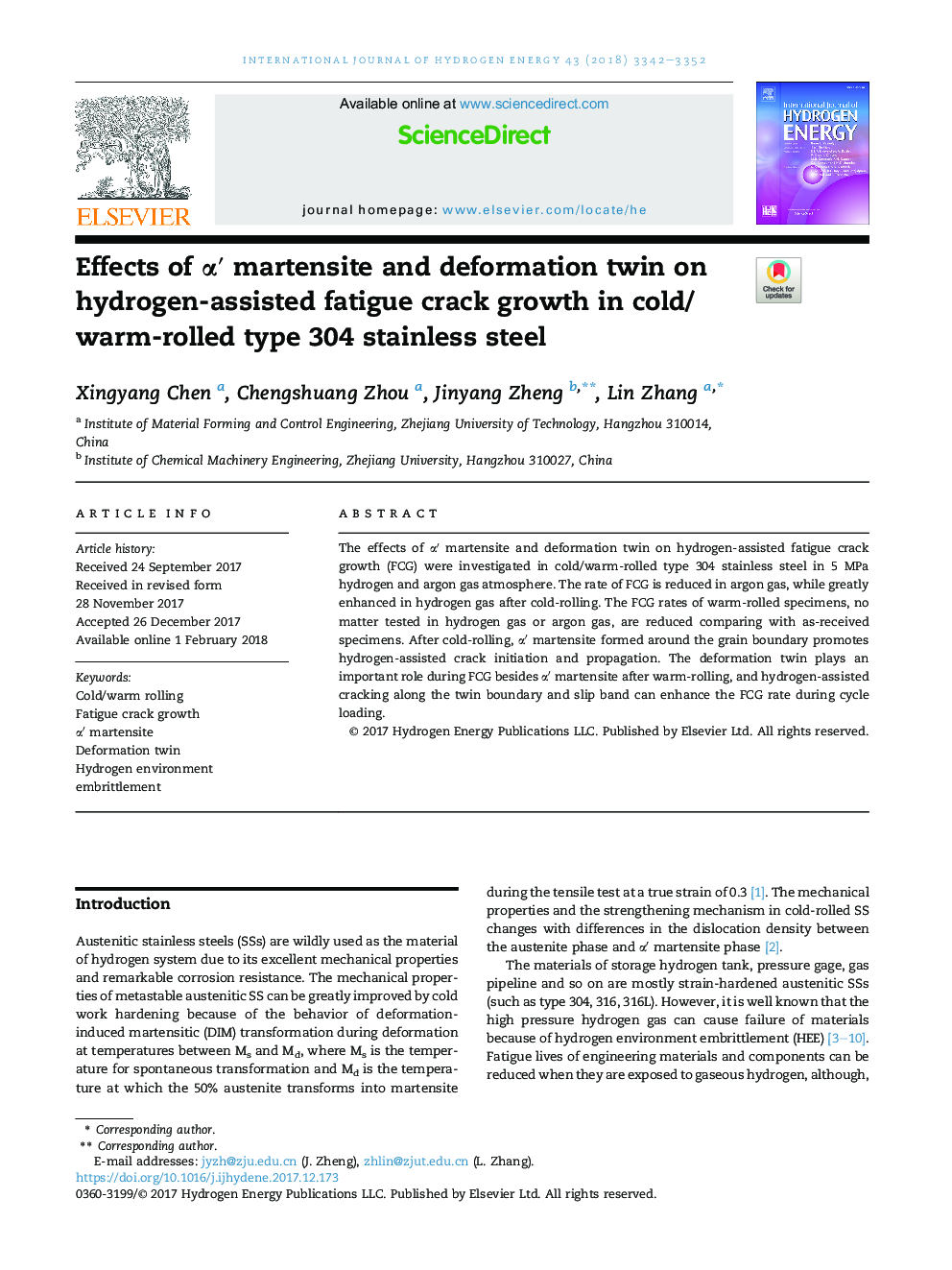| Article ID | Journal | Published Year | Pages | File Type |
|---|---|---|---|---|
| 7707819 | International Journal of Hydrogen Energy | 2018 | 11 Pages |
Abstract
The figure shows the fatigue crack growth (FCG) rates (da/dN) vs the stress intensity factor range (ÎK) curves for as-received and cold/warm-rolled 304 stainless steel and the surface crack morphology for warm-rolled specimen. The FCG rate is reduced in argon gas, while greatly enhanced in hydrogen gas after cold-rolling. The FCG rates of warm-rolled specimens, no matter tested in hydrogen gas or argon gas, are reduced comparing with as-received specimens. Hydrogen-assisted cracking along the twin boundary and slip band can enhance the FCG rate of the warm-rolled 304 specimen during cycle loading.226
Related Topics
Physical Sciences and Engineering
Chemistry
Electrochemistry
Authors
Xingyang Chen, Chengshuang Zhou, Jinyang Zheng, Lin Zhang,
